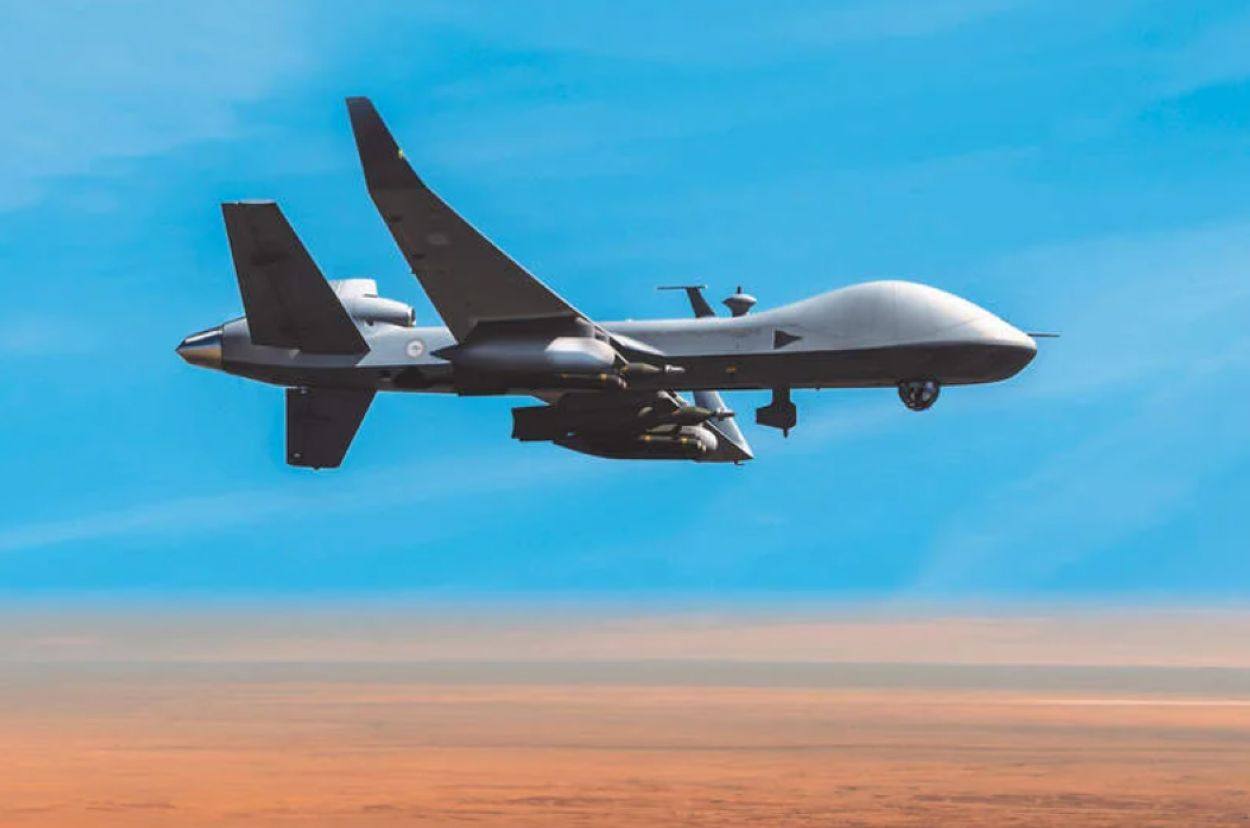By Neeraj Rajput
In the coming days, maritime surveillance of the Indian Ocean will largely depend on long-endurance drones, India’s naval strategists believe.
“For long endurance routine missions, drones are cost-effective. Also, there is no crew fatigue as is the case in reconnaissance aircraft operated by pilots”, says Vice Admiral AK Chawla (Retired), Former Flag Officer Commanding in Chief (FOC-in-C) of India’s Southern Naval Command, told the EurAsian Times.
Ukraine’s U-Turn! Kyiv Heaps Praises On ‘World’s Best’ PzH 2000 Howitzers Once Lambasted For Poor Performance
“Long Range maritime patrol and reconnaissance aircraft like P8I will now mainly be operated only for specific target purposes like ASW (Anti Submarine Warfare) or attacking the enemy warships”, Vice Admiral Chawla said, who was instrumental in formulating ‘India’s Maritime Security Strategy 2025–Supremacy at Sea for influence on Land’ in the year 2016.
India presently has only two long-endurance MQ-9 drones leased from Washington. Additionally, it has 12 P8I Poseidon aircraft procured from US aviation giant Boeing, which have completed ten years in service.
Recently, alarmed by the new air base facility coming up on Coco Island in the Bay of Bengal, the Indian Navy had enhanced surveillance of the controversial Burmese island, which is believed to have been under Chinese influence if not under control.
One of the Indian Navy’s MQ-9 Reaper drones recently took a surveillance flight off the island.
Open-source intelligence account ‘Damien Symon’ aka Detresfa, recently disclosed the route taken by an American MQ-9 drone operated by the Indian Navy. The account wrote, “Interesting route taken by an Indian Navy MQ-9 Reaper drone in the second week of April 2023 around Coco Island (Myanmar) where an airbase is undergoing modernization along with other developments.”
Coco Islands
Coco Islands are a group of islands in the Bay of Bengal under the suzerainty of Myanmar. It is believed that India had handed over these islands to Myanmar (Burma) after the independence in a land swap deal along the northeastern region. However, no official record has ever come to light.
The controversy began when Myanmar, under the military junta, allowed China to build an intelligence base in the late 90s. News also mentioned a “runway being built by China for civilian purposes here.”
This alarmed India as these islands are close to the Indian coast, particularly the strategically important Andaman and Nicobar Islands. Since then, India has kept a strict vigil over the infrastructure development in the ‘disputed’ Coco Islands.
Indian Navy, the lead maritime agency, keeps track of the Burmese islands. Surveillance is kept by naval or coast guard ships taking a round or long-range maritime reconnaissance patrol aircraft P8I aircraft from the sky.
Last year, the author took a Coco Island round in an Indian Coast Guard (ICG) ship. But for the past two years, the Indian Navy has kept surveillance of the Indian Ocean region by MQ-9 drones leased from the US.
Indian Navy acquired two MQ-9A drones, a variant of Reaper, on lease from US company General Atomics (GA-ASI) in November 2020. Remotely piloted aerial vehicles of the US firm were leased for the surveillance of the Indian Ocean, where the ‘activity’ of the Chinese PLA Navy has increased in the recent past.
MQ-9s are supplied to India by GA-ASI as part of a company-owned, company-operated (COCO) lease agreement.
According to the General Atomics, MQ-9A has an endurance of over 27 hours, speeds of 240 KTAS, can operate up to 50,000 feet, and its objective is to “perform multi-mission Intelligence, Surveillance and Reconnaissance (ISR) over land or sea.”
In January this year, the company informed that Indian Navy’s leased MQ-9s surpassed an impressive 10 thousand flight hours in the past 02 years (since November 2020) and were able to monitor an area of more than 14 million square miles.
On the April flight of the Indian Navy’s MQ-9, Detresfa further wrote, “leased MQ-9 operated by the Indian Navy loitered along the edge of the Indian ADIZ (Air Defence Identification Zone) for two hours last month, covering a 100km-radius surveillance area. One of two MQ-9s leased to India, it is equipped with an optical sensor and a maritime search radar.”

For the past couple of years, Indian Armed Forces (Indian Armed Forces, Indian Air Force (IAF), and Indian Navy) have been vying for MQ-9 Reaper drones. All three services were looking for ten such Reaper drones each, i.e., a total of 30.
“But now the demand of the services has been rationalized, and now each service is unlikely to get more than 06 each (total 18)”, a South Block source told EurAsian Times.
The Indian Navy wants the Sea-Guardian (MQ-9B) variant of the MQ-9 Reaper drone, which has been procured by Belgium, Japan, and the UK, besides being operated by the US.
All three services of India are banking on Prime Minister Narendra Modi’s visit to the US next month for such drones. Even before the PM’s visit, high-level meetings have begun in the background.
On 17th May, Defence Secretary Giridhar Aramane co-chaired the 17th meeting of the India-US Defence Policy Group (DPG) with the US Under Secretary of Defence for Policy Dr Colin Kahl, in Washington.
According to India’s Ministry of Defence (MoD), the two sides reviewed the progress in furthering defense-industrial cooperation and operationalizing the India-US Major Defence Partnership.
Essential aspects such as military-to-military cooperation, implementation of foundational defense agreements, exercises, and the ongoing & future cooperative activities in the Indian Ocean Region were discussed.
- Neeraj Rajput is a Senior War-journalist having more than two decades of multimedia experience with specialization in defense, conflict, security, strategic affairs & geopolitics.
- Mail us at etdesk (at) eurasiantimes.com
- The author tweets at @neeraj_rajput